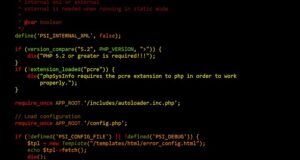Have you ever considered building native mobile apps with the power of JavaScript and React? Is it possible? And how could this process be made easier? These questions can lead to many debates among tech-experts and developers, and they are worth exploring.
For many years, it was assumed that coding any kind of native mobile app would require mastering different development languages for different platforms. This posed a serious problem for businesses and organizations since their need was to develop an app that could work on different platforms without needing to invest in different development teams for each platform. In a recent article, The Verge states that building cross-platform apps used to be “a treacherous exercise” and it has been transformed since React Native was introduced. This JavaScript-based framework addresses the need of having a single development team for multiple platforms.
In this article, you will learn about the benefits that React Native brings to the table when it comes to developing engaging mobile apps. Why is it important to use React Native to build native mobile apps? Which tools facilitate the development process, and how can developers best use these tools? Furthermore, what other approaches can be implemented with the combination of React Native and JavaScript? All of these questions will be explored, in addition to other topics pertaining to the development of native mobile apps.
Finally, this article will discuss how React Native provides developers with the tools and capabilities needed to build scalable, fast, and reliable applications. In addition, it will also feature some best practices, tips, and guidelines that can help developers make the most of their React Native development experience. Applying these tips and techniques will allow developers to build flexible and powerful mobile applications, as well as make maintenance and updates to their code easier and faster.
All in all, by the end of this article, readers should have a better understanding of the capabilities of React Native and how to use it properly in order to develop engaging native mobile apps. Through a concise overview of the advantages and best practices, developers should be empowered to make better decisions when choosing a development platform.Definitions:
React: React is an open-source JavaScript library that is used to create user interfaces for web and mobile applications. It is developed and maintained by Facebook and a community of individual developers and corporations.
JavaScript: JavaScript is a script language that allows developers to add interactivity and dynamic content to websites. It is used to create complex web applications that do not require the user to reload the page.
Mobile apps are applications that can be downloaded and installed on mobile devices, such as smartphones and tablets. These apps are usually designed to allow users to access specific features or content on their device. With the help of React and JavaScript, developers can create native mobile apps that look and feel like native apps rather than web pages.
React and JavaScript provide developers with the tools they need to create a mobile app that is tailored to the user’s needs. These tools give developers the ability to create an app that looks and works natively on the user’s device, rather than being a website that is rendered in a web browser. Developers can also create complex features such as gesture recognition and animation.
React and JavaScript make it easy for developers to create mobile apps quickly and easily. Developers can use the same codebase for both Android and iOS apps, allowing for faster development. They can also create mobile apps that are easier to maintain, since code changes can be made much more quickly.
Overall, React and JavaScript make it easy for developers to create native mobile apps. These tools provide developers with the flexibility they need to create mobile apps that look and feel native, and also allow them to create complex features. With these tools, developers can create apps that are tailored to the user’s needs, while ensuring that they remain maintainable and efficient.
Conclusion
and answers in
HTML tag.
Thought-provoking question: How can developers leverage JavaScript and React to create advanced native mobile applications?
It is clear that developers can create powerful native mobile applications using JavaScript and React. Developers can develop native mobile applications faster using these frameworks. By taking advantage of this technology, developers can create advanced user experiences and develop applications quickly. To learn more about these powerful tools, it is important to follow industry blogs and wait for new releases.
Q1: What are the benefits of developing native mobile applications with JavaScript and React?
The main advantages are increased development speed and user experience capabilities. JavaScript and React are useful for creating interactive applications with advanced user interfaces that provide an enjoyable experience.
Q2: What are the relevant libraries and tools available for developing native mobile apps?
Development libraries that help developers create native mobile applications with JavaScript and React include React Native, Next.js, Expo, Electron, and Ionic. These libraries provide the necessary components and tools for building native mobile applications.
Q3: Are there any limitations with using JavaScript and React for native mobile application development?
Yes, there are limitations such as limited access to certain native device features, and the need to create separate versions of the application for different platforms. Despite these limitations, developers can still create powerful and advanced applications with these frameworks.
Q4: What are some of the challenges associated with developing native mobile apps?
The main challenge is learning how to use the frameworks, libraries, and tools for effective development of native mobile apps. Additionally, the development process requires knowledge of all the different platforms. Debugging and testing are also challenges for native mobile application development.
Q5: Are there any best practices for developing native mobile apps with JavaScript and React?
Yes, some best practices include learning and understanding the frameworks, libraries, and tools in depth, and testing the application rigorously before launching. Additionally, developers should use version control to keep track of changes made, and they should keep the application up to date with the latest updates.
In conclusion, developers can create powerful native mobile applications using JavaScript and React. This technology can be leveraged to create advanced applications with impressive user experiences. To maximize the potential of this technology, developers should follow industry blogs and wait for new releases. By following these best practices, developers can create secure and reliable native mobile applications with JavaScript and React.

